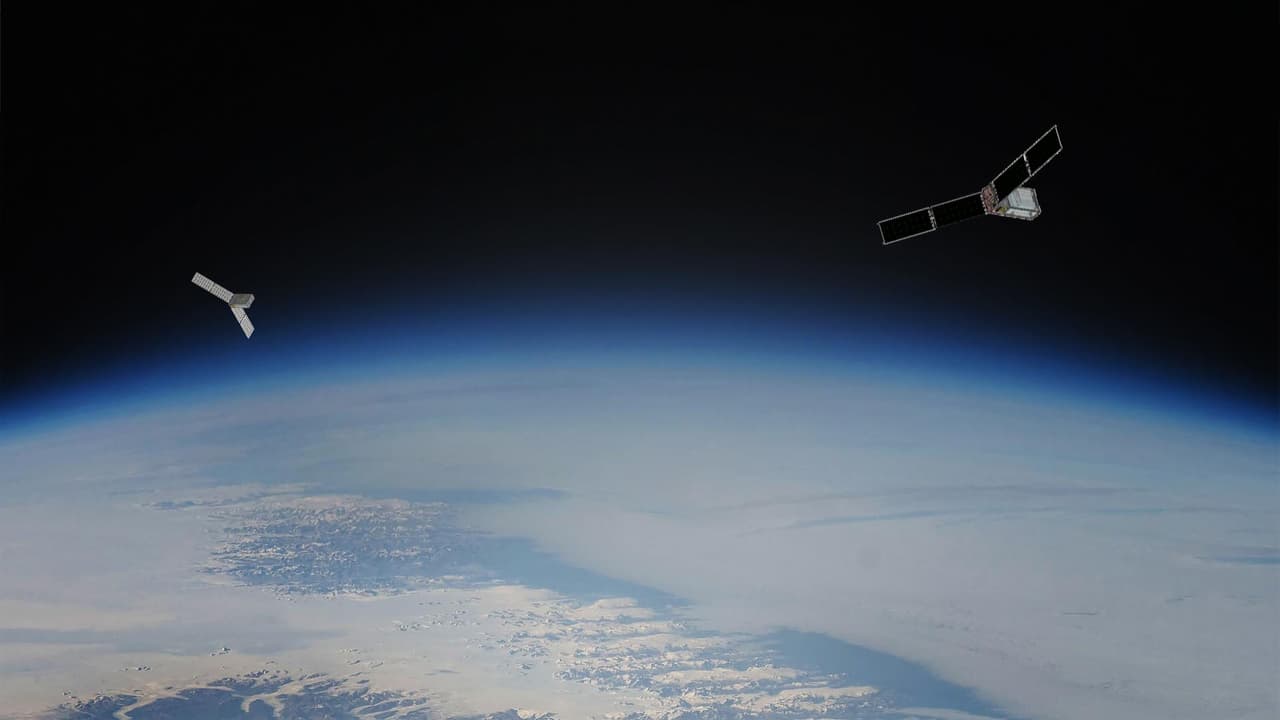NASA’s PREFIRE mission, using two shoebox-sized CubeSats, is tracking invisible heat escaping Earth. Extended through 2026, it studies how ice, clouds, storms affect energy balance, helping improve weather forecasts and deepen climate change insights
Secret Glow From Earth
NASA’s tiny PREFIRE satellites reveal hidden heat escaping Earth, offering insights into ice, clouds, storms, and climate change.
When you step outside on a sunny day, you can feel the Sun’s warmth on your skin. What we don’t usually think about is that Earth also gives off its own kind of “glow” — invisible heat energy that escapes into space. Now, two small satellites from NASA are helping scientists track this hidden energy like never before.
What is PREFIRE?
The mission is called PREFIRE (Polar Radiant Energy in the Far-InfraRed Experiment). Instead of being huge, bus-sized satellites, PREFIRE uses two tiny CubeSats — each about the size of a shoebox. Launched in 2024, they were originally designed to study how heat escapes from the icy Arctic and Antarctic. But their mission has been so successful that NASA has now extended it until at least September 2026 — and the satellites will expand their view to cover the entire planet.
Why Study Earth’s Heat?
Our climate works like a giant balancing act. The tropics soak up huge amounts of energy from the Sun. Winds, ocean currents, and storms carry some of that heat toward the colder poles. Eventually, part of that energy escapes back into space, especially from icy and cloudy regions. The difference between how much energy comes in and how much goes out is a key driver of weather and climate. If more heat is trapped, Earth warms. If more escapes, things cool down.
PREFIRE is giving scientists a clearer picture of this process by measuring far-infrared radiation — a kind of light that humans can’t see but can feel as warmth. In fact, these CubeSats can detect 10 times more far-infrared wavelengths than any previous space instrument.
What Have We Learned So Far?
One surprising finding is that different types of ice release heat in different ways. The satellites show that the energy escaping to space can change by as much as 5% depending on whether the ice is smooth, rough, or covered by snow. Other instruments that measure shorter wavelengths miss this difference.
That small change matters because ice, clouds, and moisture control how storms form and how rain and snow move around the world.
How It Helps Us
By gathering this invisible data, PREFIRE will:
- Improve weather forecasts by giving models better information about how heat and moisture move through the atmosphere.
- Help predict storms by showing how clouds and ice interact with energy.
- Deepen our understanding of climate change, especially in sensitive areas like the poles where warming is happening fastest.
Two Tiny Satellites, Big Job
The CubeSats fly in near-polar orbits, passing over the same region hours apart. This setup lets scientists see how conditions change in short bursts — for example, how a cloud temporarily traps heat before moving on.
Behind the mission is a team effort:
- NASA’s Jet Propulsion Laboratory built the special spectrometers.
- Blue Canyon Technologies constructed the CubeSats.
- University of Wisconsin–Madison processes the data.
- Rocket Lab launched the satellites from New Zealand in 2024.
A Glow Worth Watching
Though PREFIRE’s satellites are small, the information they’re sending back is powerful. By showing us the “secret glow” of Earth, they’re helping scientists understand how our planet keeps its balance — and how that balance is shifting in a warming world.
